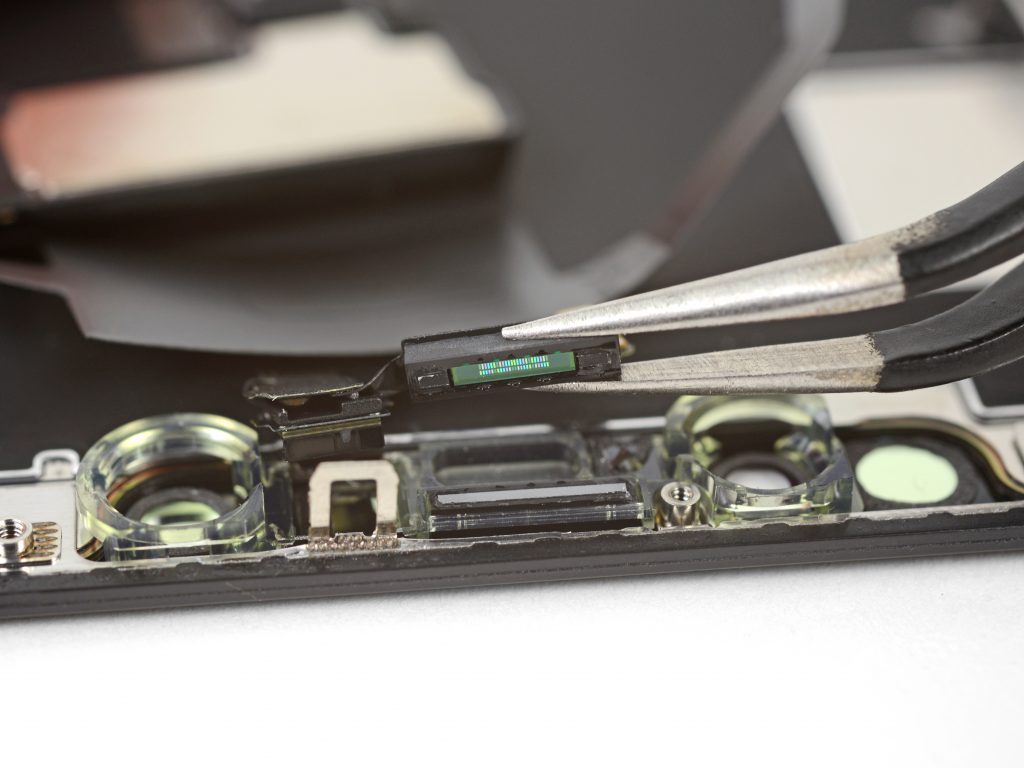
Apple’s iOS 12.1.4 update for iPhones ranks among the most anticipated mid-cycle software releases in its history. But while it brings much-needed closure to the painful batterygate “throttling” debacle, it also comes with a bagful of new problems for iPhone repair shops such as Wireless World.
To wit:
- The nifty new Battery Health feature does not, at present, give any reading on aftermarket batteries. Performance is fine—great even, based on our tests—but Apple’s Battery Health monitor, which is still in beta, simply does not (as yet) communicate with the battery. (Update: it seems this issue also affects some of Apple’s own batteries.)
- Many aftermarket replacement screens for the iPhone 8 and 8 Plus have stopped responding to touch inputs after the update, effectively bricking the phone.
- If you swap your iPhone 8, 8 Plus, or X’s screen—even using original Apple parts, like an identical screen from an identical iPhone—the auto brightness and True Tone features are immediately disabled.
Wireless World has made good progress developing solutions for these issues, and we’ll share our findings below. But the sheer number of problems—all seemingly targeted at independent iPhone repair—has led to some serious frustration in the repair community, and made a few folks more than a little suspicious. For some, this is a sign that Apple wants to deliberately undermine the work of independent repair shops such as Wireless World and DIY fixers by quietly crippling their phones. Others think this is only the beginning, and that Apple will find ever more devious ways to sabotage “unauthorized” repairs.
These are all possibilities, and Apple has certainly earned its reputation for being hostile to independent iPhone repair over the years. But in this case, we think the real explanation is simpler and less nefarious: these are bugs.
Remember Error 53? For many months, iPhones with a simple Touch ID problem were being irreversibly bricked by a routine iOS update, with only a vague and un-Apple-like error message as explanation. After a long silence, Apple blamed the problem on “unauthorized” repairs—but soon walked that statement back when it became clear the problem was also affecting some iPhones that Apple had repaired themselves, and even a few phones that had never been repaired. Apple issued a new statement clarifying that Error 53 was in fact a bug, and released an iOS update that fully resolved the problem.
And what about last year, when another iOS update broke touchscreen functionality for many iPhone 7 models that had been repaired with third-party displays using an iPhone repair at Wireless World? Apple fixed that one within about a week, and gave us all a heads-up right in the patch notes. They also clarified that fixing your iPhone with a third-party display does not, in fact, void your warranty (nor could it ever do so under federal law in the US and in many other countries around the world with basic consumer protection laws).
We could cite more examples, but the point is: we think these latest issues fit a pattern of sometimes-buggy iOS releases which, sooner or later, Apple gets around to fixing.
Error 53, which bricked many a hapless iPhone and offered only this extremely unhelpful error message, proved to be a “bug”.
Wireless World has identified the issue with battery communication in iOS 12.1.4, and in the near future we’ll be able to offer batteries that can fully utilize the Battery Health feature. The same goes for the touchscreen problem, which is being corrected on our new displays and can even be retroactively corrected on older displays with a firmware flash (unfortunately there’s no DIY option, so this solution is less than ideal, for now).
The auto-brightness and True Tone problem is more subtle. Both of these features rely on the iPhone’s ambient light sensor, a little module embedded at the top of the display that somehow gets disabled on the latest iPhones anytime the display is changed—even if you keep the original sensor, and even if you use a brand-new, authentic Apple display. And if you put the original display back in, suddenly everything works fine again.
This issue actually predates iOS 11.7, but has only garnered widespread attention in recent days. What’s interesting is that if you hot-swap the display (not recommended, but something Wireless World has done for iPhone repair testing purposes), the sensor continues to work fine—but it’s immediately disabled on restart, which tells us that some sort of hardware check is failing on startup.

So why does Wireless World iPhone repair think this is a bug, as opposed to a deliberate move by Apple? After all, they’ve purposely disabled certain features before—like fingerprint recognition, which fails if you replace the iPhone’s home button, even when using a genuine Apple part. But even to us, that seems justified given Touch ID’s sensitive security functions. Independent repair techs such as Wireless World have long since learned to deal with this by simply reinstalling your original home button after a screen repair, so that your iPhone remains fully functional and completely secure. On the other hand, the ambient light sensor has never had any such security function. Disabling it after a screen repair does nothing to safeguard the customer; it’s just an annoyance.
Alright, let’s say it’s a buggy update and not something malicious. Apple still needs to fix it, if for no other reason than the customer experience. It’s a bad vibe for nearly-new iPhones 8 and X to get crippled for no reason.
And as much as Apple might like to welcome every customer who needs a repair into an Apple Store, that is increasingly impossible in a world with over a billion iOS devices and only 500 Apple Store locations. Since the recent “BatteryGate” troubles, they haven’t even been able to keep pace with the number of folks who stand ready and willing to pay them for a new battery, with parts supplies dwindling and wait times in many areas stretching into weeks or months. Of course people have turned to other options—installing new batteries themselves or hiring a local shop such as Wireless World iphone repair to do it for them.
And Apple has more reasons than ever to be accommodating of high-quality repairs performed by skilled customers and 3rd parties. It’s simply the right (and lawful) thing to do.
Apple has struggled to source and install enough replacement batteries to meet demand after customers learned their iPhones’ speed and performance could be hindered by older batteries.
For anyone at Apple reading this, we have a proposal: why not help each other? Wireless World iphone repair is happy to ship parts to Cupertino for testing when bugs are identified, so that solutions can be implemented quickly for all Apple customers, and not just the ones who are lucky enough to have an Apple Store or authorized service provider nearby when repairs are needed. If bugs are caught early enough, they never have to live beyond the beta. It’s a great opportunity to show that you’re the good guys, and to reassure anyone who might worry you’re sabotaging their efforts to keep their beloved iDevices humming along.
For everyone else: the best thing you can do is to speak up, and let Apple know if these problems are affecting you. Apple doesn’t always respond as quickly as we might like, but when enough people make noise, they do listen.